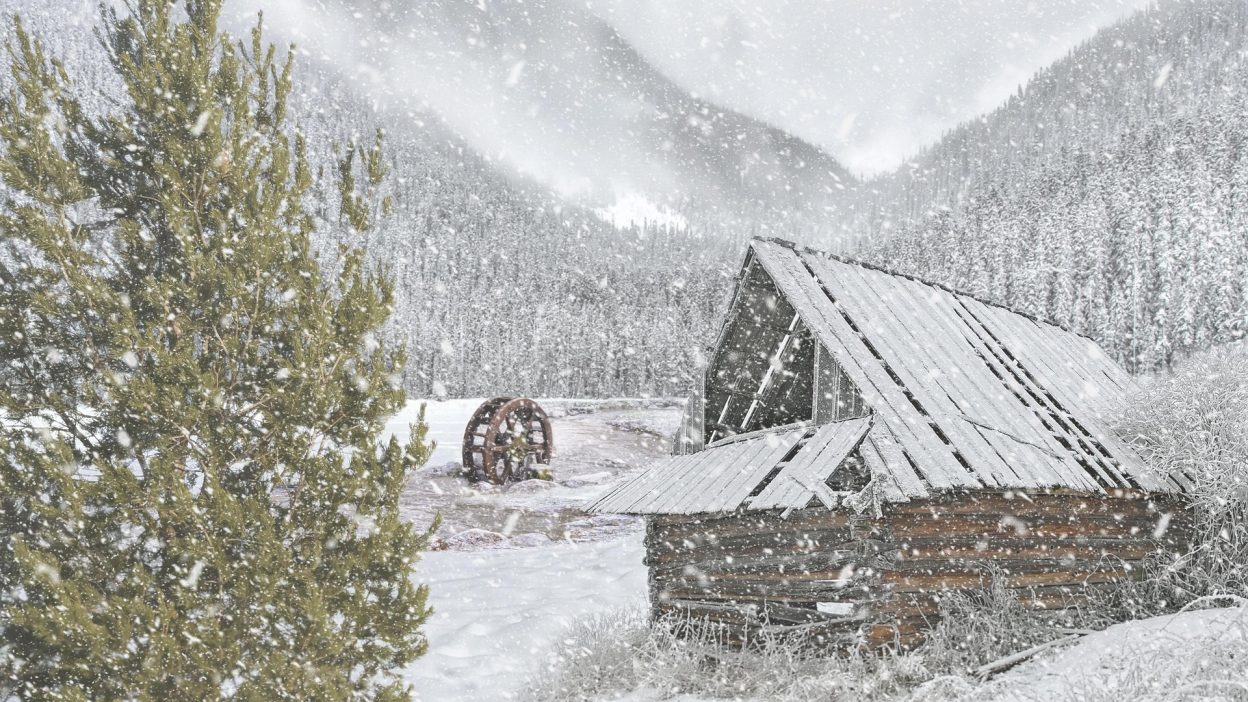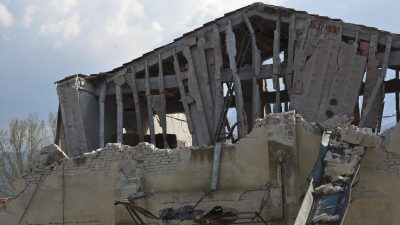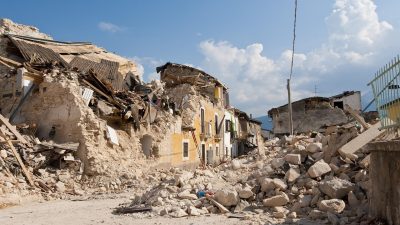A Catastrophe That Engulfed the Northeast United States
The Great Blizzard of 1888, which struck in March of that year, remains one of the most devastating snowstorms ever to have hit the United States. Over the course of just a few days, it wreaked havoc across the northeastern states, leaving a wake of destruction that would go down in history as a testament to the immense power of nature. The storm hit particularly hard in areas like New York, New Jersey, Connecticut, and Massachusetts, causing widespread disruption and chaos.
Beginning on March 11, 1888, the storm spread rapidly, engulfing cities and towns with heavy snowfalls, freezing temperatures, and hurricane-force winds. By the time it had passed, the death toll was staggering, with estimates putting the number of fatalities at over 400. Thousands more were injured, and the economic impact was felt for months, if not years. For many, the blizzard’s toll extended far beyond just the physical destruction—it marked a turning point in how America would approach future natural disasters, disaster management, and storm preparedness.
The Unpredictable Fury: A Storm that Caught the United States Off Guard
The Great Blizzard of 1888 was a storm of unprecedented severity, both in terms of its scale and its unexpected arrival. The storm formed in a period when weather forecasting technology was in its infancy. While the signs of an impending storm were visible, the lack of accurate weather prediction systems meant that the citizens of the northeastern states were caught completely unaware.
At the time, meteorology was still a developing field. The telegraph, which would later become essential for disseminating storm warnings, was not as widely used for meteorological purposes as it is today. Moreover, there were no official weather bureaus to send out warnings to the public. The lack of forecasting technology and the absence of weather satellites and radar meant that the storm’s true scale was only realised once it had already begun to unfold.
Without advanced warning, many cities failed to take precautions that could have mitigated the storm’s impact. Streets in major cities like New York and Boston quickly became buried under feet of snow, making it impossible for people to move freely. Public transport systems, including railroads, buses, and streetcars, were rendered inoperable. Even emergency services faced delays as roads became blocked and the snow accumulated rapidly, which would later be seen as a major flaw in the nation’s infrastructure and disaster preparedness strategies.
The Devastation of the Blizzard: Lives Lost, Injured, and Displaced
- Fatalities: The storm claimed the lives of over 400 individuals.
Hypothermia, frostbite, and snow-related accidents were the leading causes of death. Thousands of people who were outside during the height of the blizzard were exposed to the bitter cold for long periods, leading to frostbite and hypothermic shock. With temperatures plunging far below freezing, survival for anyone caught outside was a daunting challenge. Trains and other forms of transport were stranded, leaving many people stuck in the middle of the storm, unable to seek shelter or help. Those who did manage to find shelter, often in buildings that were inadequately prepared for such weather, did not survive due to the freezing indoor temperatures. - Injuries and Disabilities: Thousands were affected by physical harm.
The storm caused a wide range of injuries, from frostbite to broken bones and even more severe traumas from falling trees and debris. With many cities plunged into darkness due to power outages, people struggled to navigate streets blanketed in deep snow, leading to a surge in accidents. The lack of visibility created additional danger, especially as people attempted to walk through snowdrifts or clear debris from their homes and businesses. - Property Damage: The destruction caused to infrastructure was immense.
Entire buildings collapsed under the sheer weight of the snow accumulation, and railroad lines became completely obstructed. In some cities, there were reports of snowdrifts reaching up to 50 feet in height, making it impossible for trains and streetcars to get through. Telegraph lines were also knocked out, leaving cities without communication for days. The economic impact was severe, with many businesses being unable to operate for several days. The aftermath of the blizzard left millions of dollars in damages and disrupted local economies.
After the Storm: The Long Road to Reform and Disaster Preparedness
One of the key outcomes of the Great Blizzard of 1888 was the way it forced the United States to rethink and reform its approach to storm preparedness. The scale of the storm’s impact revealed significant weaknesses in infrastructure and planning that had previously been overlooked.
In the years that followed the blizzard, there was a major push for improvements in weather forecasting. The government began to fund more resources for the development of weather bureaus that could issue early warnings and predictions to the public. These bureaus would become a precursor to today’s National Weather Service and National Oceanic and Atmospheric Administration (NOAA).
Cities in the affected regions began to implement urban planning changes that aimed to better cope with severe weather conditions. New York, which had been severely impacted by the storm, invested in snow ploughs and other machinery to clear roads more effectively. Public buildings were also designed with better heating systems, and emergency shelters became standard features in public spaces. These changes were implemented not only as a means to address the immediate impacts of the blizzard but also as a way to prepare for future extreme weather events.
In the broader context, the storm highlighted the need for federal disaster management systems. Prior to the blizzard, disaster response had largely been left to local governments, which were ill-equipped to handle such a large-scale crisis. After the event, calls for better coordination between federal, state, and local agencies grew louder, laying the groundwork for future federal disaster relief efforts.
Survivor Stories: The Human Cost of the Blizzard
The human stories that emerged from the Great Blizzard of 1888 paint a vivid picture of the harrowing reality many faced during the storm. Thousands were stranded in their homes or in the middle of the storm, desperate to survive. Many of those who were able to recount their experiences spoke of the extreme cold, the disorienting whiteouts, and the endless snow.
One account from a New York City resident tells the story of a young woman, Margaret O’Connor, who was trapped inside her apartment for several days. The snow piled up so quickly that her front door became blocked, leaving her unable to leave and no one able to check on her. With little food and no way of knowing when the storm would end, she had to rely on the warmth of her fireplace to survive.
Another account came from a group of immigrant workers who were stuck in a New Jersey train station. They were on their way to work when the storm hit, and their train became stranded. With no food or heat, they were forced to spend the night in the station, some of them eventually venturing out into the storm in search of help. Sadly, many of these workers never made it out, and their bodies were found in the snow days later.
The blizzard also claimed the life of a Connecticut farmer who lost his life while attempting to rescue his family from a collapsing barn. His bravery saved many lives, but the freezing cold left him severely frostbitten, and he eventually lost both of his hands.
These personal stories reflect the resilience and survival instincts that individuals had to summon during this terrifying event, yet they also highlight the many lives lost due to the unpredictable and merciless nature of the storm.
Response to the Blizzard: A Slow and Ineffective Government Reaction
The response to the Great Blizzard of 1888 was highly criticised for being slow and inadequate. While the storm was indeed intense, the lack of coordinated response exacerbated its impact. Many of the cities most affected—particularly New York, Boston, and Philadelphia—were ill-equipped to deal with such extreme weather conditions.
Although the storm was predicted, the communication infrastructure was not advanced enough to allow for widespread dissemination of warnings. Telegraph lines, which were key to relaying information, were knocked out by the storm, and railroads were unable to transport goods or people. This left local authorities scrambling to manage the aftermath, with many of them lacking the necessary tools, such as snowploughs and emergency shelters, to cope with the situation.
While some local charities and volunteer organisations worked to provide relief, their efforts were hampered by the sheer scale of the storm. Many parts of New York City were completely isolated, and rescues took longer than they should have due to the snowdrifts and frozen roads. In the wake of the storm, calls for federal involvement in disaster relief became louder, laying the groundwork for future national disaster management initiatives.
The Immigrant Experience: How the Blizzard Impacted the Most Vulnerable
One of the most poignant aspects of the Great Blizzard of 1888 was its devastating impact on immigrant communities, particularly those in urban areas like New York City. Many immigrants worked in hazardous, low-paying jobs, such as in factories, railroads, and construction, where they were exposed to the storm’s brutal conditions.
In many cases, these workers were unable to get to safety, and they faced tremendous challenges in finding adequate shelter or food. Many immigrant families lived in overcrowded tenements, which lacked the infrastructure to keep people warm during extreme weather. As a result, these communitiessuffered disproportionately during the storm, with many deaths resulting from hypothermia and frostbite. These vulnerable populations were often the hardest hit, as their limited access to resources and shelter left them with little chance of survival.
One striking account involves a group of Polish immigrants living in the Lower East Side of New York, who had to endure the storm without adequate heating in their cramped apartments. They huddled together for warmth, but many succumbed to the extreme cold. Due to the isolation of immigrant communities, their suffering went largely unnoticed by the broader public, illustrating the disparities in survival rates during such disasters.
The response to these communities was also severely lacking, as they had limited access to emergency services. Relief efforts in immigrant-heavy areas were disorganised, and due to the snowdrifts, many of these areas remained inaccessible for days. The blizzard highlighted the stark contrast between the wealthy and impoverished populations, showing that the latter had little to no protection from the wrath of nature.
Lasting Impacts: How the Blizzard Changed American Cities Forever
The effects of the Great Blizzard of 1888 extended well beyond its immediate destruction. The storm profoundly altered the urban landscape of the affected cities, prompting significant changes in infrastructure, urban planning, and even the socioeconomic fabric of the northeastern United States.
In New York City, the storm exposed weaknesses in the city’s public transportation system, which was largely incapacitated by the snow. In the wake of the storm, the city began investing in a more resilient transit network, including the creation of snow removal infrastructure. The introduction of snowploughs to clear streets and the installation of street-level heating systems were seen as crucial steps in preparing the city for future storms.
The blizzard also spurred cities to rethink their approach to disaster preparedness. Following the disaster, there was a growing recognition of the need for coordinated responses to extreme weather events. Weather-related urban policies were introduced to ensure cities could better handle snow, ice, and other climate challenges. The storm marked a turning point in the way the nation thought about the protection of vulnerable populations, and led to changes in building codes, emergency procedures, and disaster response systems.
Furthermore, it prompted the establishment of public works projects, such as the construction of public shelters and the expansion of emergency services. In hindsight, the blizzard was a catalyst for much-needed reforms in disaster management and urban resilience.
Conclusion: A Legacy of Destruction and Preparedness
The Great Blizzard of 1888 stands as a powerful reminder of nature’s unforgiving force. It left an indelible mark on the cities it struck, fundamentally changing the way the United States approached disaster preparedness and urban planning.
While the blizzard’s human toll was staggering, it also served as a catalyst for change. The aftermath saw improvements in weather forecasting, emergency response, and urban infrastructure—all of which would play a crucial role in safeguarding future generations. The event marked a turning point, prompting America to become better equipped for future natural disasters, and ensuring that lessons learned from the storm would not be forgotten.
The storm’s impact on vulnerable communities, particularly immigrant populations, underscored the need for a more equitable and inclusive disaster response system. The memory of the storm continues to shape the way we think about disaster management and preparedness, serving as a poignant reminder of the importance of investing in infrastructure that can withstand nature’s worst.
Frequently Asked Questions
- How many people died in the Great Blizzard of 1888? Over 400 people lost their lives during the Great Blizzard of 1888, with many deaths caused by hypothermia, frostbite, and accidents in the snow.
- What caused the Great Blizzard of 1888? The storm was caused by a massive low-pressure system that combined with high winds and heavy snow to create one of the most powerful snowstorms in history.
- How did the Great Blizzard of 1888 affect transportation? The blizzard caused widespread disruption to transportation, with trains, streetcars, and buses being completely incapacitated, leading to travel chaos and economic disruption for days.
- What changes were made after the Great Blizzard of 1888? Following the disaster, cities invested in snow removal infrastructure, improved public transport systems, and created disaster management plans to better handle future storms.
- Did the Great Blizzard of 1888 lead to better weather forecasting? Yes, the blizzard prompted increased funding for weather bureaus and improvements in storm prediction, leading to the establishment of the National Weather Service and better weather forecasting practices.
Final Thoughts
The Great Blizzard of 1888 was a transformative event in American history. It reshaped how cities approached disaster preparedness, prompted significant infrastructure changes, and provided critical lessons in emergency response. While it was a devastating tragedy, it ultimately led to a more resilient America, better prepared to face the challenges posed by nature.




